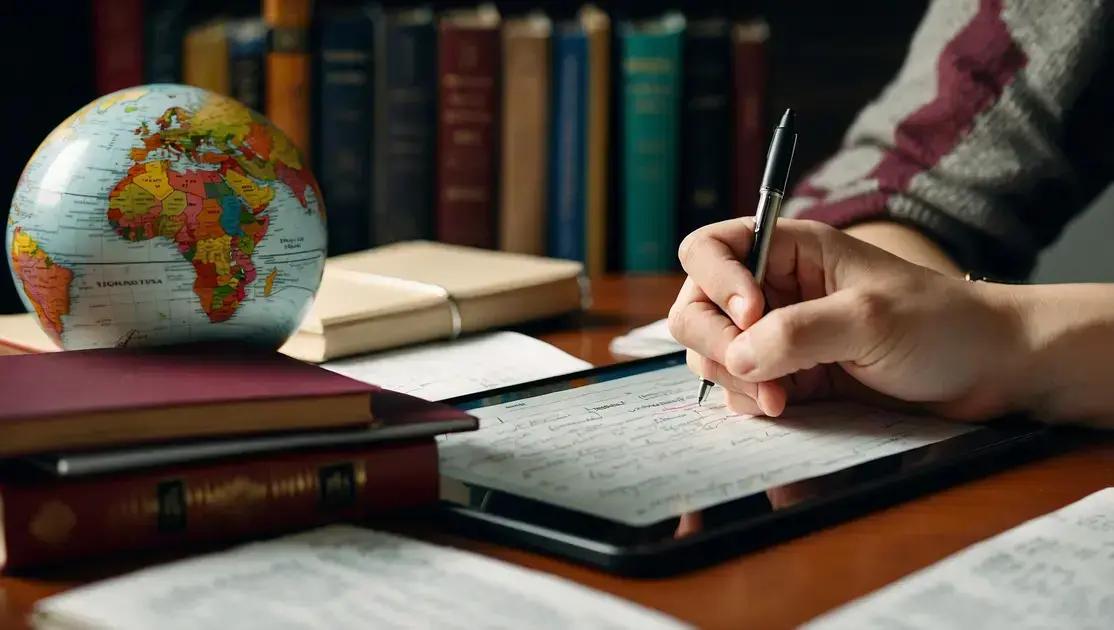Bilingual hacks are effective techniques for learning languages quickly, including the use of useful phrases, language apps, and communication practices. These tips help increase fluency and confidence in communication, making the learning process more enjoyable and productive.
Have you ever heard of bilingual tricks? They can be the key to learning a new language in an easy and effective way. In this article, we will explore what these tricks are, how to apply them in your daily life and practical tips to make your learning journey more fun and productive.
Useful Sentence Tricks for Bilinguals
Useful phrases are essential tools for anyone who wants to communicate fluently in a new language. They help build a vocabulary base and practice pronunciation effectively. In addition, these phrases often reflect everyday situations, making learning more practical and relevant.
Examples of Useful Phrases in Conversation
Starting with simple phrases can be extremely beneficial. For example, learning how to introduce yourself can make new interactions easier. Some useful phrases include:
- Hello, my name is… (Hello, my name is…)
- How are you? (How are you?)
- I would like to ask… (I would like to order…)
These phrases are a great starting point and can be expanded with variations as you progress in your learning.
Check out some valuable tips for traveling alone
Practicing Useful Phrases
Practicing the use of useful phrases is just as important as learning them. Try to incorporate them into your daily conversations, whether with conversation partners or through apps. Regular practice helps to strengthen your memory and confidence in communication.
Tips for Learning Useful Phrases Quickly
First, a tip for memorizing useful phrases is to use flashcards, where you can write the phrase on one side and its translation on the other. Review these cards regularly and test yourself in different contexts. Additionally, hearing native speakers use these phrases in real contexts, such as in movies or songs, can make learning and pronunciation easier.
Bilingual Language Apps

First of all, language apps have become a popular tool for people who want to learn a new language in an accessible and convenient way. With technology at your fingertips, learning has never been easier and more flexible. Apps offer a variety of features that make it easier to practice and immerse yourself in your chosen language.
Check out some valuable tips for traveling alone
Main Features of Language Apps
Language apps typically include features like:
- Interactive classes: Allow users to practice vocabulary and grammar in a fun way.
- Tests and games: They make learning easier and more motivating, challenging users to advance their knowledge.
- Conversation with native speakers: Many apps offer the option to chat with native speakers, which is essential for practicing pronunciation and listening comprehension.
Benefits of Using Language Apps
Using apps has several benefits. They are:
- Flexible: You can study anytime, anywhere, adapting your learning to your routine.
- Customized: Many apps adjust content based on your level and preferences.
- Motivators: Gamification of certain applications helps keep the user engaged and interested in learning.
Tips for Getting the Most Out of Language Apps
To get the most out of language apps, consider:
- Set daily goals: Commit to spending a specific amount of time each day studying.
- Combine with other fonts: Use books, videos and real conversations to complement your learning.
- Practice regularly: Consistency is key to memorizing and practicing the language.
Bilingual Communication Tips
To the communication tips are essential for anyone who wants to improve their skills in a new language. Communicating effectively is not just about speaking, but also about listening and understanding the cultural context. Here are some suggestions to improve your communication while learning a new language.
Check out some valuable tips for traveling alone
1. Listen Carefully
Listening is a crucial part of communication. Pay attention to what others are saying and try to absorb their pronunciation, intonation, and vocabulary. TV shows, podcasts, and music are all great tools for improving your listening comprehension.
2. Practice Regularly
Regular practice helps solidify what you’ve learned. Try to communicate in everyday situations, even if it’s just simple conversations. Joining conversation groups or finding a language partner can be extremely beneficial.
3. Use Gestures and Facial Expressions
First of all, gestures and facial expressions can help convey your message and make up for a lack of vocabulary. Don’t hesitate to use your hands to illustrate what you’re saying. This can make the conversation more dynamic and understandable.
4. Don't Make Mistakes
Making mistakes is part of the learning process. Above all, don’t let the fear of making mistakes stop you from communicating. Every mistake is an opportunity to learn and improve. Accept feedback and use it to your advantage.
5. Get Involved in Culture
Understanding the culture behind the language you’re learning can greatly improve your communication skills. Watch movies, read books, and attend cultural events. This will help you connect more with the language and use it in appropriate contexts.
In short, how to improve your bilingual communication skills
Improving your communication skills in a new language takes practice and patience. By listening carefully, practicing regularly, and not being afraid to make mistakes, you will become more confident. Using gestures and facial expressions can help convey your message, making communication clearer.
Additionally, immersing yourself in the culture of the language you’re learning gives you a deeper, richer understanding, which is invaluable. Every interaction is a learning opportunity that can help you achieve fluency.
So stay motivated and keep practicing. Over time, you will see progress and become an effective communicator in your new language.


